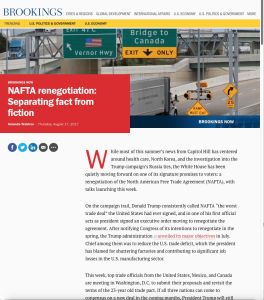
Recommendation
One of Donald Trump’s banner campaign promises was to revamp or eliminate the North American Free Trade Agreement (NAFTA), which he called “the worst trade deal” in US history. He blames NAFTA for the loss of US manufacturing jobs. Soon after the election, the White House set a renegotiation in motion. However, the Brookings Institution’s Amanda Waldron makes the case that the effort to revise or toss the agreement may be misguided and potentially dangerous. getAbstract recommends this succinct but cogent article to trade experts and to executives whose companies would bear the impacts of changes to NAFTA.
Summary
About the Author
Amanda Waldron is a digital media manager at the Brookings Institution.








Comment on this summary